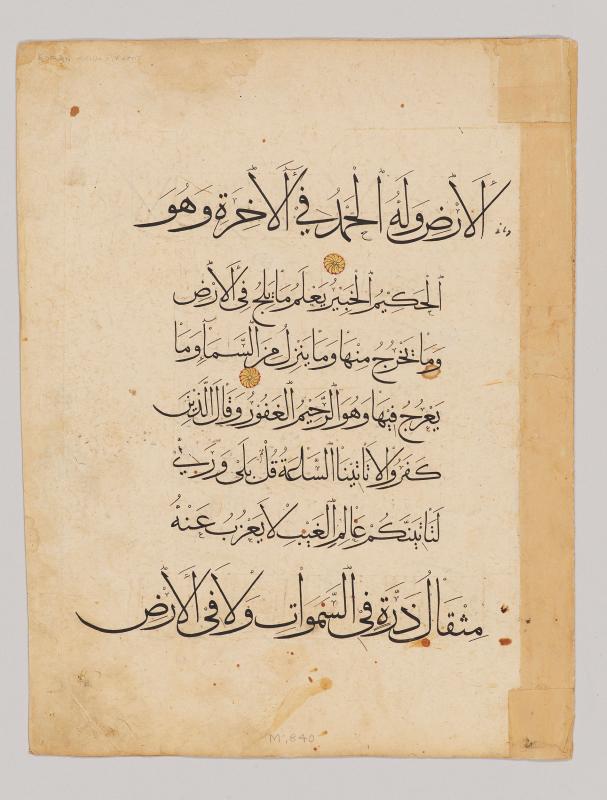
Ms. leaves from a Qurʾan; written and illuminated in the first quarter of the 14th century; probably in Baghdad, Iraq.
Text: sura 34, Sabāʾ (Sheba), verses 1-7 (fol. 1); sura 11, Hūd (Hūd), verses 89-94 (fol. 2), 112-20 (fol. 3); sura 41 Fuṣṣilat (Explained), verses 34-40 (fol. 4).
Two hundred and two leaves from this manuscript are in the Chester Beatty Library, Dublin; 173 leaves are in the Topkapi Palace Museum, Istanbul (Topkapı Sarayı Müzesi); four additional fol. were sold at Sotheby's, London, Apr. 7, 1975 (lot 185).
Scribe: ʻAbd-Allāh Arghūn al-Kāmilī.
Decoration: written on polished cream paper; a torsional rosette in gold with red and turquoise accents appears after verse in the smaller script; in the larger script verse endings are marked by ornaments like sunbursts inscribed with the word āya in a large script in gold on a red background framed in gold and blue; marginal illuminations include teardrop-shaped ornaments inscribed with the word khamsa and sunbursts inscribed with the word ʻashara; the center disks of the marginal decorations are red or blue and gold; the borders of overlapping petals and palmettes are in two shades of blue, two shades of bright gree, cream, red, and gold.
